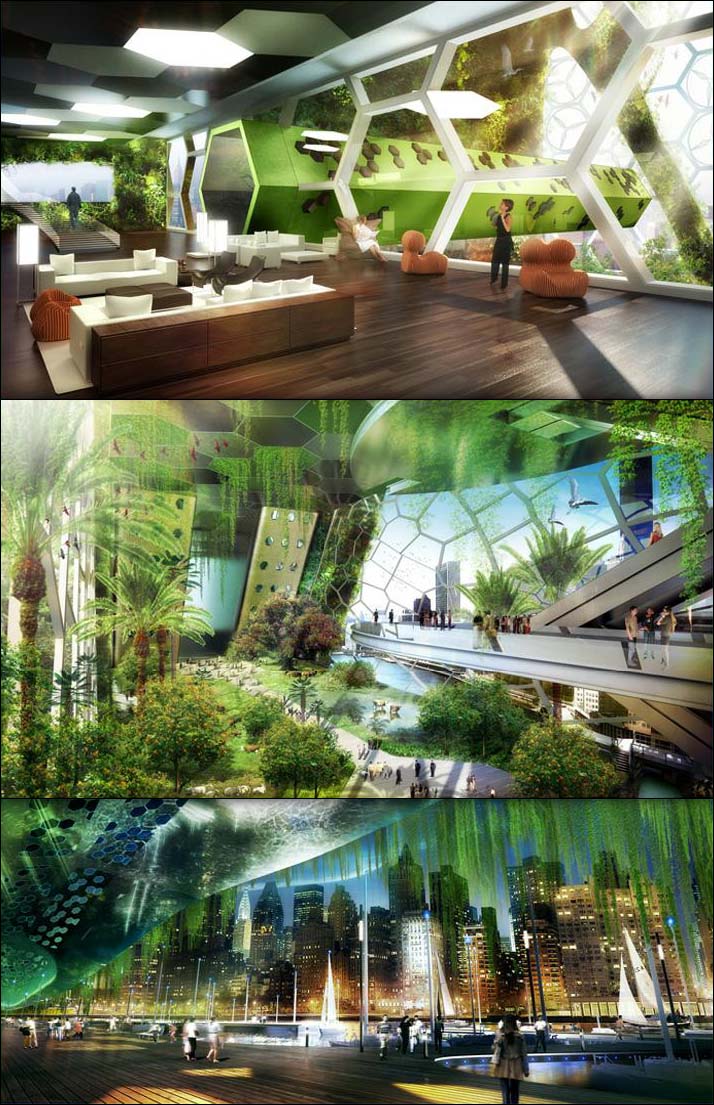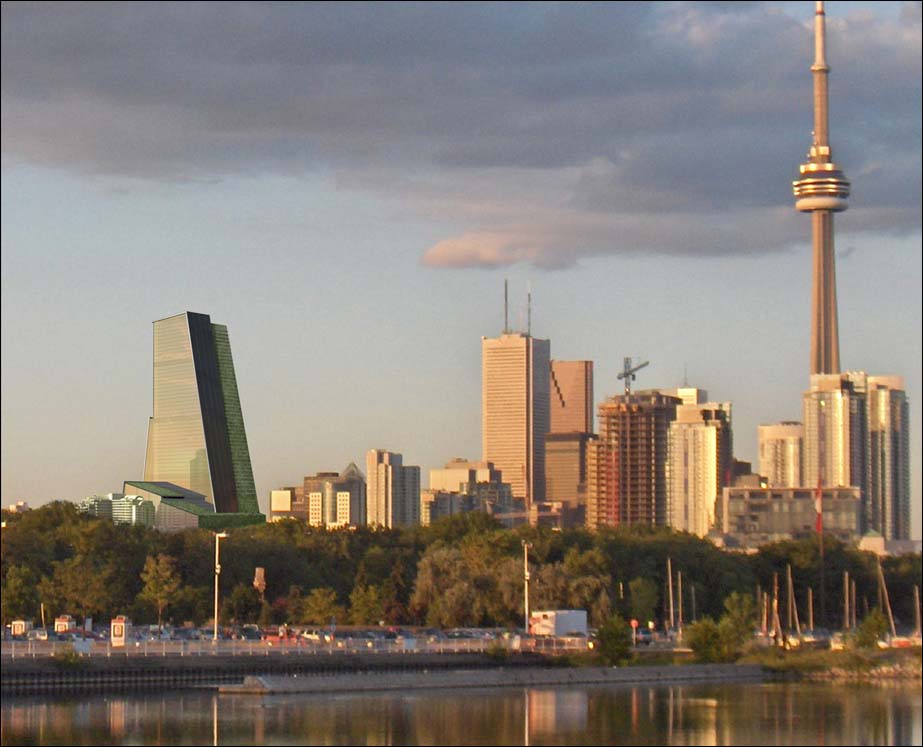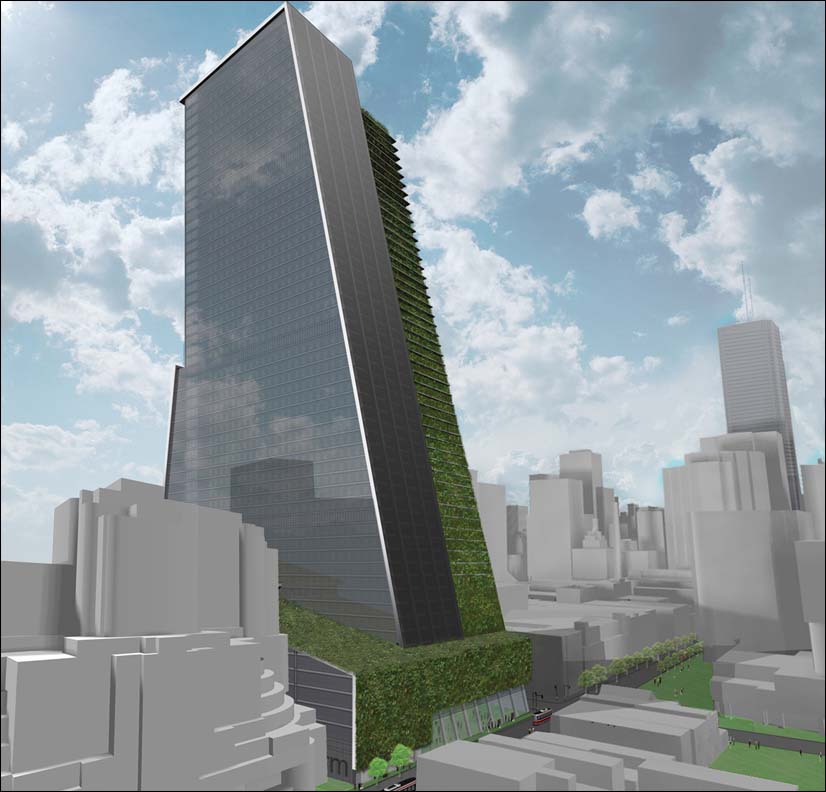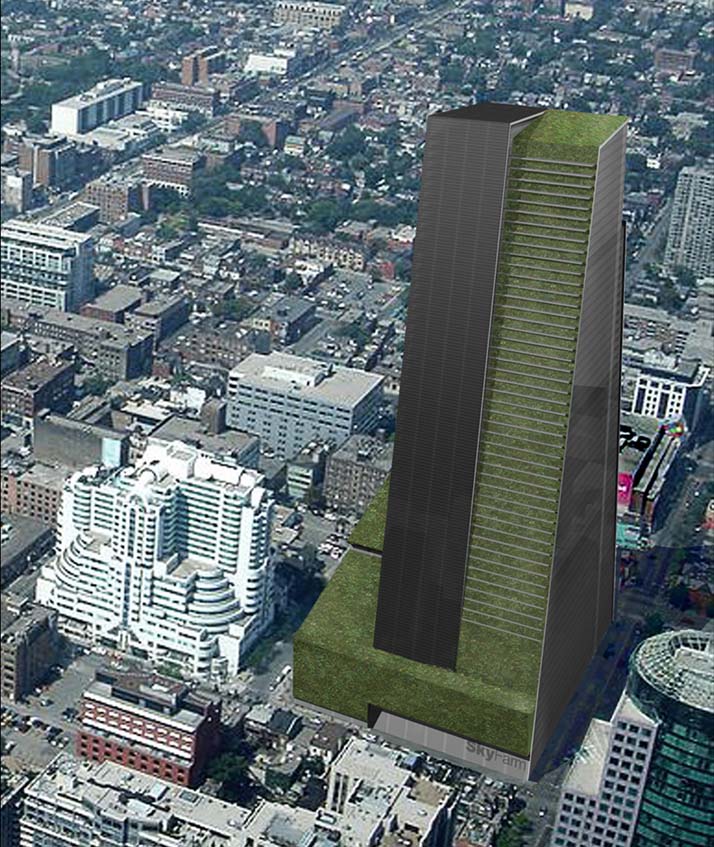Rumble Pie #15
Grasping at Grass
THE PROBLEM IS Malthus remixed: the population of the planet is expanding exponentially, but forty per cent of the planet's land mass is already being used for agriculture. There are hardly any virgin patches left in the temperate zones to convert into new farmland, and what's currently being used to grow food is expected to fail in the decades to come. These are the facts and figures for so-called conventional agriculture, using poisonous pesticides. If we demanded that everyone have the right to eat organic food -- currently less than three per cent of the population does -- we would need to more than double the amount of land being cultivated for food crops. It would mean the total destruction of all of the tropical rainforests, since they would need to be used for grazing, to produce poop for natural fertilizer. So how do we provide the whole human family with healthy food?
DR. DICKSON DESPOMMIER, professor of environmental sciences at Columbia University, believes he has seen the future of agriculture, and it takes place in city skyscrapers. Excited by the concept of green roofs, his students calculated the amount of food that could be harvested if all 13 acres of the commercial roof space in Manhattan was used for farming. Unfortunately, it only amounted to a measly two per cent of the borough's food bill. To come up with the remaining 98% of New York County's food budget, Despommier advocates planting crops on more than just top floors; let entire high-rises be dedicated to urban agriculture. By his calculation, 33 of these 50-storey farm factories could make the island self-sufficient for food, and with funding money, he could have the first vertical farm up and running in under a decade.
 FOR FRUITS AND VEGETABLES to grow in the heart of the concrete jungle, an environment completely alien and utterly inhospitable to them, lots of NASA space age technology is required. Instead of embedding them in irrigated soil, they are placed in plastic carts and are ferried around on assembly lines, where robots spray them with mist and minerals, and dose them with their allotted amount of light and heat. A sophisticated sensor system is supposed to screen out any offending bacteria and isolate any infected fruit or vegetable. When their robot keepers scientifically determine that they have sufficiently matured, they are mechanically harvested, processed, and packaged. On the first floor of the building, they are even sold to general public. Talk about vertical consolidation!
FOR FRUITS AND VEGETABLES to grow in the heart of the concrete jungle, an environment completely alien and utterly inhospitable to them, lots of NASA space age technology is required. Instead of embedding them in irrigated soil, they are placed in plastic carts and are ferried around on assembly lines, where robots spray them with mist and minerals, and dose them with their allotted amount of light and heat. A sophisticated sensor system is supposed to screen out any offending bacteria and isolate any infected fruit or vegetable. When their robot keepers scientifically determine that they have sufficiently matured, they are mechanically harvested, processed, and packaged. On the first floor of the building, they are even sold to general public. Talk about vertical consolidation!
DESPOMMIER AND OTHER ADVOCATES of the vertical farm tout its numerous advantages. Conventional farms occasionally suffer from disastrous acts of nature, like hailstorms and monsoons, or droughts and wildfires, and as global warming kicks in, these incidences will only increase. Vertical farms are immune to these, since they regulate their environment and are protected from the elements. For these same reasons, advocates of vertical agriculture claim that these skyfarms will grow only "organic" produce, because fertilizers, herbicides and pesticides will become superfluous without soil. And under these artificial conditions, they will be able to recycle massive amounts of water, one of the biggest expenses of open-air farms. Most fabulously, since they are removing themselves from natural cycles and simulating optimum growing conditions, they will be able to yield far more harvests, producing much more food.
 AND WE'RE NOT JUST TALKING about veggies and legumes. The plan is to produce cow meat for human consumption. They can't possibly graze on grass at a thousand dollars per square foot of precious real estate -- they still haven't come up with a techno-fix for that problem -- but they can clone bovine stem cells, feed them protein shakes, and electrically shock them to simulate muscle texture. So just about all aspects of the average American diet are accounted for. If we base our calculations on Despommier's optimistic figures -- that a 30-storey building that covering a single city block could feed 50,000 people -- this means that 60 of these skyfarms could feed the entire city of Toronto... and 600 skyfarms -- an array of 25 by 25, the size of a small town -- could feed the whole country of Canada!
AND WE'RE NOT JUST TALKING about veggies and legumes. The plan is to produce cow meat for human consumption. They can't possibly graze on grass at a thousand dollars per square foot of precious real estate -- they still haven't come up with a techno-fix for that problem -- but they can clone bovine stem cells, feed them protein shakes, and electrically shock them to simulate muscle texture. So just about all aspects of the average American diet are accounted for. If we base our calculations on Despommier's optimistic figures -- that a 30-storey building that covering a single city block could feed 50,000 people -- this means that 60 of these skyfarms could feed the entire city of Toronto... and 600 skyfarms -- an array of 25 by 25, the size of a small town -- could feed the whole country of Canada!
OKAY, I'VE GIVEN the supporters of skyfarming ample opportunity to present their case in favour. Can I please rip into it now?
 WHERE TO START? Let's begin with the supposed savings that result from food localization. Yes, growing food much closer to the point of purchase will significantly reduce the amount of costly energy and environmental damage incurred transporting produce to market. But food miles constitute only a very small fraction of the energetic, economic and ecological costs. That's not to say that it's not important to reduce these wherever we can. But it's certainly not the area in which we can make the most difference. University of Toronto professor Pierre Desrochers calculated that even in Britain -- an island that has higher import costs than we do, because it can't have produce trucked in from tropical climates in the way that we can import berries overland from California -- the costs associated with driving back and forth from the supermarket to buy green beans from Kenya are more than 40 times the price of it being shipped onto their shores from faraway Africa.
WHERE TO START? Let's begin with the supposed savings that result from food localization. Yes, growing food much closer to the point of purchase will significantly reduce the amount of costly energy and environmental damage incurred transporting produce to market. But food miles constitute only a very small fraction of the energetic, economic and ecological costs. That's not to say that it's not important to reduce these wherever we can. But it's certainly not the area in which we can make the most difference. University of Toronto professor Pierre Desrochers calculated that even in Britain -- an island that has higher import costs than we do, because it can't have produce trucked in from tropical climates in the way that we can import berries overland from California -- the costs associated with driving back and forth from the supermarket to buy green beans from Kenya are more than 40 times the price of it being shipped onto their shores from faraway Africa.
 IN DESPOMMIER'S FUTURIST FANTASY, it's not just that these skyfarms will supply some of the food for city slickers -- he means for them to supply most of the food for urban areas, if not almost all of it. So what will become of the farmers of today, and what will become of the land that they farm? Let's dismiss the obviously false claim of allowing farmland to return to its native state: permitting trees to populate meadows, reducing greenhouse gases and preserving animal habitats, saving them from extinction. Under the hyper-capitalist conditions that caused this food crisis to begin with, there's no way that so valuable a commodity would be allowed to lie fallow. Will they start supplementing the monocultural crops grown in the inner-city food factories with exotic, expensive heirloom varieties of vegetables? Under current market conditions, it's far likelier that these fields will be turned into carbon farms, growing inefficient bio-fuels to replace rapidly-peaking oil and natural gas.
IN DESPOMMIER'S FUTURIST FANTASY, it's not just that these skyfarms will supply some of the food for city slickers -- he means for them to supply most of the food for urban areas, if not almost all of it. So what will become of the farmers of today, and what will become of the land that they farm? Let's dismiss the obviously false claim of allowing farmland to return to its native state: permitting trees to populate meadows, reducing greenhouse gases and preserving animal habitats, saving them from extinction. Under the hyper-capitalist conditions that caused this food crisis to begin with, there's no way that so valuable a commodity would be allowed to lie fallow. Will they start supplementing the monocultural crops grown in the inner-city food factories with exotic, expensive heirloom varieties of vegetables? Under current market conditions, it's far likelier that these fields will be turned into carbon farms, growing inefficient bio-fuels to replace rapidly-peaking oil and natural gas.
 AN ARRAY OF SOLAR PANELS on the southern face of the building and wind turbines on top of the tower are not going to even come remotely close to meeting the needs of an energy-addicted skyfarm. Fifty-storey concrete-and-steel skyscrapers contain megatonnes of embedded energy. Water recycling systems are incredibly energy-intensive, too. And because crops won't be exposed to the southern sun, it'll need lots of artificial light and heat -- 100 times more than is used by the average office worker! Despommier thinks that by funneling the city's sewage system through the base of the building, he can burn methane and create excess energy to power the whole damn contraption. But he hasn't done his high school homework: the amount of power produced is miniscule in comparison -- if it even came close, it would violate the law of conservation of energy!
AN ARRAY OF SOLAR PANELS on the southern face of the building and wind turbines on top of the tower are not going to even come remotely close to meeting the needs of an energy-addicted skyfarm. Fifty-storey concrete-and-steel skyscrapers contain megatonnes of embedded energy. Water recycling systems are incredibly energy-intensive, too. And because crops won't be exposed to the southern sun, it'll need lots of artificial light and heat -- 100 times more than is used by the average office worker! Despommier thinks that by funneling the city's sewage system through the base of the building, he can burn methane and create excess energy to power the whole damn contraption. But he hasn't done his high school homework: the amount of power produced is miniscule in comparison -- if it even came close, it would violate the law of conservation of energy!
 BUT DESPOMMIER'S MOST OFFENSIVE claim is that this is a solution for Darfur and other conflict-ridden regions of the world that suffer from food shortages. Ha! Billion-dollar vertical farms wouldn't even be profitable in a First World city, competing with investment bankers for premium square footage. And when environmental costs can't be externalized any more and food starts to its reflect real value, making rent on a Park Avenue penthouse will be the least of his worries, as the inevitable riots ensue. On average, North Americans spend less a tenth of every dollar they earn on foodstuffs -- less than anyone else in the world, so our perspective on this issue is completely skewed. Sudan won't ever be able to afford a castle-in-the-skyfarm -- this is just another neo-colonial slavery scheme that has more to do with First World agro-tech profits than Third World sustainability strategies.
BUT DESPOMMIER'S MOST OFFENSIVE claim is that this is a solution for Darfur and other conflict-ridden regions of the world that suffer from food shortages. Ha! Billion-dollar vertical farms wouldn't even be profitable in a First World city, competing with investment bankers for premium square footage. And when environmental costs can't be externalized any more and food starts to its reflect real value, making rent on a Park Avenue penthouse will be the least of his worries, as the inevitable riots ensue. On average, North Americans spend less a tenth of every dollar they earn on foodstuffs -- less than anyone else in the world, so our perspective on this issue is completely skewed. Sudan won't ever be able to afford a castle-in-the-skyfarm -- this is just another neo-colonial slavery scheme that has more to do with First World agro-tech profits than Third World sustainability strategies.
 DESPOMMIER HAS EVEN SUGGESTED that Monsanto, arguably the most evil corporation on the planet, is the perfect partner to develop seeds specifically for skyfarms. This fact alone pushes the plan over the edge from impossible pipe dream to heinous apocalyptic nightmare. Media critic Jerry Mander has explained how it is insane and suicidal to insist on trying to fix a problem that was caused by technology with another technology-based solution! The first two high-tech agricultural revolutions in our lifetimes produced much more food for market, but at great human and environmental cost. Yes, conventional agriculture is the biggest polluter on the planet, even bigger than 'industry', as Despommier points out -- but this is a red herring false dichotomy: conventional agriculture is industrial. Yes, we have to change the way that we acquire our calories, and fast. But NOT LIKE THIS.
DESPOMMIER HAS EVEN SUGGESTED that Monsanto, arguably the most evil corporation on the planet, is the perfect partner to develop seeds specifically for skyfarms. This fact alone pushes the plan over the edge from impossible pipe dream to heinous apocalyptic nightmare. Media critic Jerry Mander has explained how it is insane and suicidal to insist on trying to fix a problem that was caused by technology with another technology-based solution! The first two high-tech agricultural revolutions in our lifetimes produced much more food for market, but at great human and environmental cost. Yes, conventional agriculture is the biggest polluter on the planet, even bigger than 'industry', as Despommier points out -- but this is a red herring false dichotomy: conventional agriculture is industrial. Yes, we have to change the way that we acquire our calories, and fast. But NOT LIKE THIS.
 IF THE OBJECTIVE IS really to grow healthy food much closer to the point of purchase, there's no reason that supermarkets all across the country can't turn their own roofs into greenhouse grow-ops. In fact, there's already a company out in California that is doing exactly that. Sky Vegetables, out of San Francisco, partners with local grocers to produce food right on top of their retail outlets. Even Harrod's, the largest department store in the United Kingdom at over a million square feet, has begun to grow green vegetables on the roof at their flagship location. You don't have to engineer any complex structure or research any unproven technology; just go green on your existing roof, and save on your heating and cooling bills while you're at it.
IF THE OBJECTIVE IS really to grow healthy food much closer to the point of purchase, there's no reason that supermarkets all across the country can't turn their own roofs into greenhouse grow-ops. In fact, there's already a company out in California that is doing exactly that. Sky Vegetables, out of San Francisco, partners with local grocers to produce food right on top of their retail outlets. Even Harrod's, the largest department store in the United Kingdom at over a million square feet, has begun to grow green vegetables on the roof at their flagship location. You don't have to engineer any complex structure or research any unproven technology; just go green on your existing roof, and save on your heating and cooling bills while you're at it.
IN ANY CASE, there's no need to reinvent the plow in every generation. We already have a perfectly good idea of what happens when a culture suddenly has to feed far more mouths than its industrial farming model can provide for. When the Soviet Union collapsed twenty years ago, and its ideologically-motivated oil subsidies ended, Cuba was still under a crippling American trade embargo. But it managed to survive its food crisis, because of old-school small-scale organic urban agriculture that proliferated across the island. Watch the incredible 53-minute documentary below and be amazed, then learn more at the website The Power of Community. Thirty-six years ago, E.F. Schumacher taught us that Small Is Beautiful, and it's truer than ever in our own time.
|

